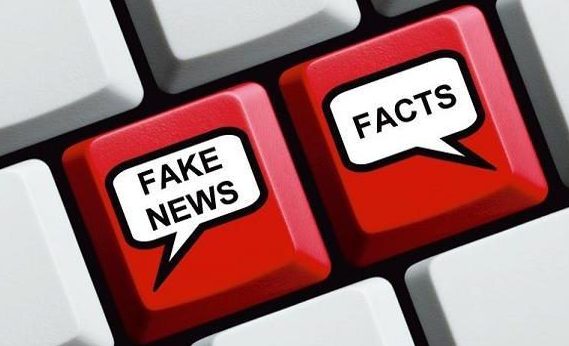
Fake News has two different definitions. It can be a slur towards legitimate news or it can be actual falsified news stories on social media. The ability to tell the difference is not very difficult, but some people seem to be having trouble separating the two.
The rise of this term being used as a catchphrase began primarily with the election of the Trump administration. President Trump throws it at every news outlet he does not agree with in an attempt to invalidate them. The suppression of free press is a concern of the public because history shows a trend of autocratic leaders doing the same. In a country like the United States that derives its power from claims of freedom and democracy, the ability of journalists to freely publish content is paramount.
“I have been hearing that term a lot lately. I do not like it at all obviously in my line of business. It’s come to be described as news that is made up. I think it is characterized that way, but a lot of people look at it in a different way where it may be incomplete news, or news that doesn’t have all the facts. But I do not like that character of using “fake news.” I think what we do is very important. We do watchdogs, we entertain, we educate, so I think our role is very important to the public because if it weren’t for journalists, there are a lot of things in society that the common man would not know about. We give voice to the voices. A lot of times when people can’t get their message across it is our job to deliver them,” says David Humphreys, Deputy sports editor of the Fort-Worth Star Telegram.
Typically, people consume news media outlets that are reputable for their specific codes of practice. However, with the rise of social media and information collection, there are automated bot accounts on websites like Facebook and Twitter that spread falsified political propaganda in order to manipulate public opinion. Everyone is familiar with the “Pizzagate” news story which claimed that Hilary Clinton was running a pedophile ring out of a pizza restaurant called Comet Ping Pong. As ridiculous as these faux stories sound, their creators put a lot of time into making them believable enough that they put reasonable doubt in some readers’ minds.

After the presidential election in 2016, people worried that fake news spread on Facebook as well as foreign interference, mainly from Russia, were responsible for helping sway the results. Conversely, Trump used his fake news claims on licensed media outlets like CNN or The Washington Post to dispute the evidence that there has been some sort of Russian intervention in the 2016 U.S. presidential election.
“Russia talk is FAKE NEWS put out by the Dems, and played up by the media, in order to mask the big election defeat and the illegal leaks!” said Donald Trump (@realDonaldTrump) via Twitter on February 26, 2017.
Now, other politicians on Capitol Hill have taken up the same tactic. In January of 2017, the Counselor to the President, Kellyanne Conway, called the fake numbers from Trump’s Inauguration reported by Sean Spicer, “alternative facts.” Recently the former Chief Justice of Alabama, Roy Moore, claimed that multiple of his sexual misconduct allegations were “fake news.”
Eric Zurate, editor for high school and minor league sports at the Fort Worth Star Telegram also follows politics and election night results a great deal. He knows the importance of noticing the difference between what is valid journalism and what is imitative journalism. Especially how recognizing the difference between the two is crucial to the sanctity of U.S. news and journalism.
“The term seems to come first from politicians and from folks who don’t like the things that are getting reported about them. It’s still information and it’s a journalist’s right to publish it or to put it out there. We are all lumped together. But at a chain of newspapers we have our resources. Somebody can just follow somebody on Twitter, a bunch of athletes, politicians, or conservative or liberal groups, put A, B, L, and F together, and think that they have a story. It’s just stringing things together that are no near complete or accurate. But in this world of social media, anybody can have a Twitter account so you can do that stuff. Bloggers are a lot of times far from journalists. We as journalists strive for accuracy continuously,” says Zurate.
Legitimate news companies that go through fact and source checking practices are integral in United States checks and balances since they are keeping a close eye on the government and informing the public. People are not going to always agree with or particularly like what they read in the news, but that does not mean that news does not deserve to exist. The problem occurs when falsified facts are being spread by individuals and bots trying to exploit public opinion.

